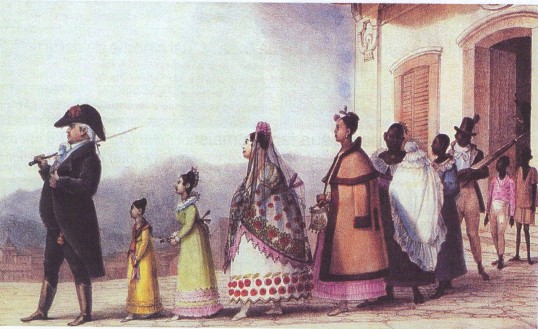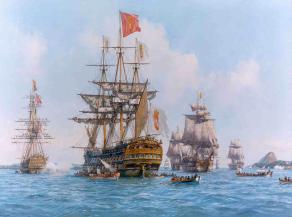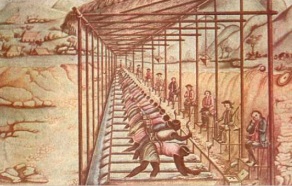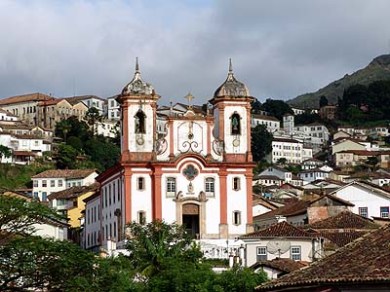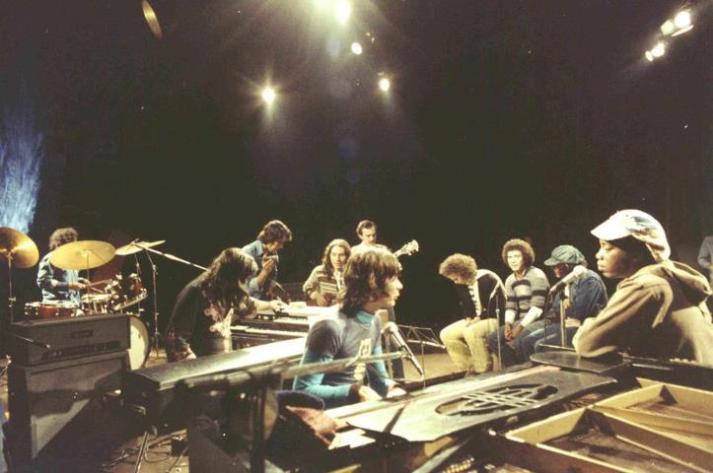Lost Samba – Chapter 04/02 – Brazilian History in a Flash.
About two centuries later, after populating the Northeastern coast of Brazil with profitable sugar plantations, the white colonizers finally found the gold that they had always believed to exist. Rather than being hidden away in the mythical El Dorado, it was lying on riverbeds beneath crystalline waters, far beyond the coastal mountain range. A flood of adventurers, some alone and others accompanied by militias and enslaved African descendants plunged into the region to claim the nuggets that the natives had simply perceived as being beautiful offerings of Mother Nature. The prospectors were afraid of Indians, wild beasts, bandits and runaway slaves, but nevertheless they dipped their rusty metal equipment into the water. The riches that they found there and carried back to the coast, made Brazil one of the world’s most prosperous colonial possessions.
Because its port was closer to the mines than Salvador, the then capital of Brazil, Rio de Janeiro began its ascension to become the country’s most important city. However, Rio only really started to develop its flamboyant personality in 1808, with the arrival of the Portuguese royal family. Accompanied by thousands of courtiers, the king had fled Lisbon on the very eve of the city being occupied Napoleon’s advancing army after they had already seized the rest of the Iberian peninsula. Just as with my dad, the Portuguese refugees crammed into any sailing vessels they could find to take them to safety, and crossed the ocean under the protection of the British navy.
The arrival of House of Bragança marked the first time European royalty had set foot in the Americas. The experience of a European royal family ruling over a global empire from the New Continent was completely unique. With them came debauchery and abuse of power but the noble families also brought with them scholars who would open the first schools in Brazil, as well as artists, intellectuals and concepts of an evolved legal system and administration.
The royal court had one thing in common with Brazil’s indigenous people: whether by contract or by slavery, labour was taboo. The difference between the two, was that the Portuguese women also took it easy and the males had other people to go to war for them. It is not that there were no colonizers labouring on the land. During the course of the Portuguese colonization, there were numerous agricultural settlement schemes based on European immigrants, much like the experience of pioneer settlers in North America. But in general, the question of who was going to do the hard physical labour – especially in the mines, in the sugar plantations and later in the coffee plantations – worried the colonizers. Initially they tried to employ the indigenous inhabitants but these fled, died from the white men’s diseases or, in the ultimate act of resistance, committed suicide. The answer was to turn to Africa. In total, some four million enslaved Africans were transported across the South Atlantic to Brazil and they would become the third leg of the country’s genetic pool. Brazil would champion the world in slave imports and from the late nineteenth century, the African descended population would constitute the majority of the nation, and would transform Brazil into the largest black country outside the African Continent.
There was another question: as Portugal’s military had been completely defeated by the French invaders in Europe, how could they possibly defend Brazil’s long shoreline? Britain came to the rescue. The result would be that although Brazil was never to belong to the British Empire, the country was to be part of its zone of economic and political influence.
Anyway, because of the gold trade and the arrival of the royal court, Rio de Janeiro developed into Brazil’s prosperous and cosmopolitan capital where its small but influential merchant community shared power with the ruling nobles. In general, foreigners ended up doing intellectual tasks, such as engineering, medicine, commerce and industry. The authorities granted the British the major contracts to modernize the country– developing ports, railways, electricity systems and other key infrastructural elements – while immigrants from Portugal and from elsewhere fulfilled the role of a middle class.
